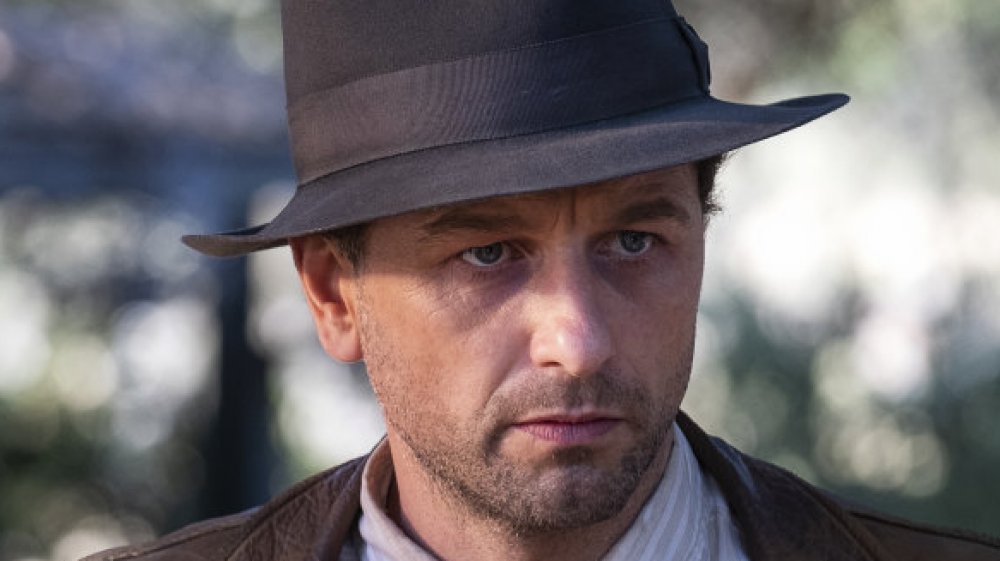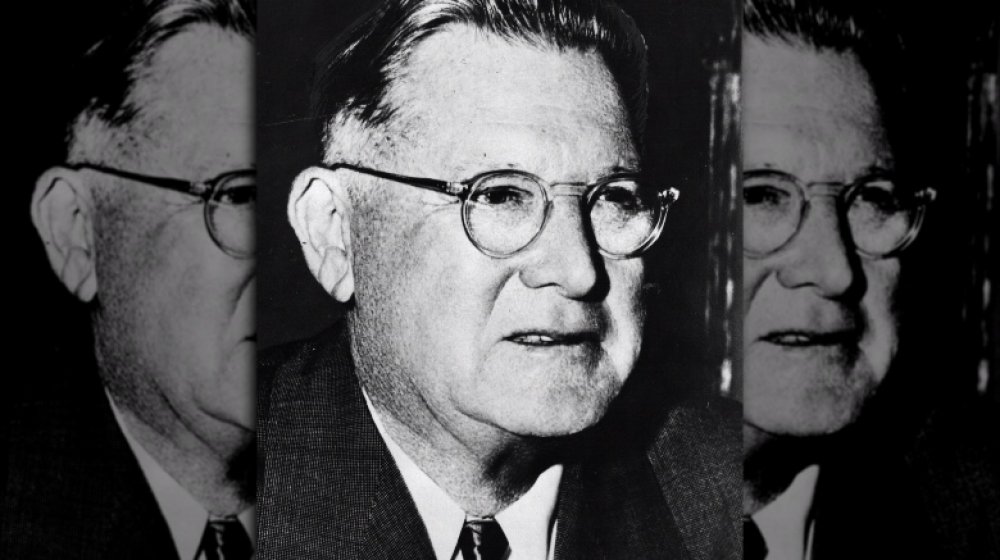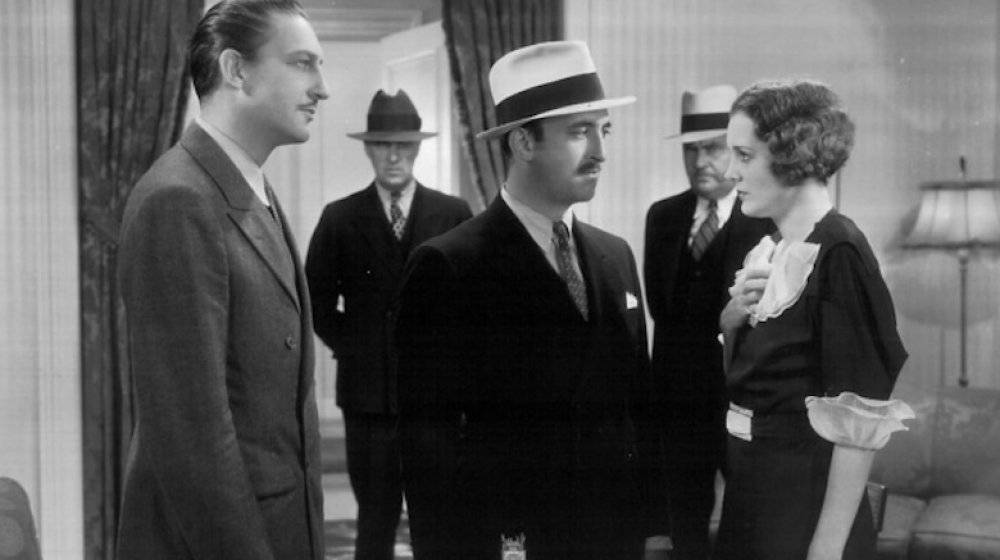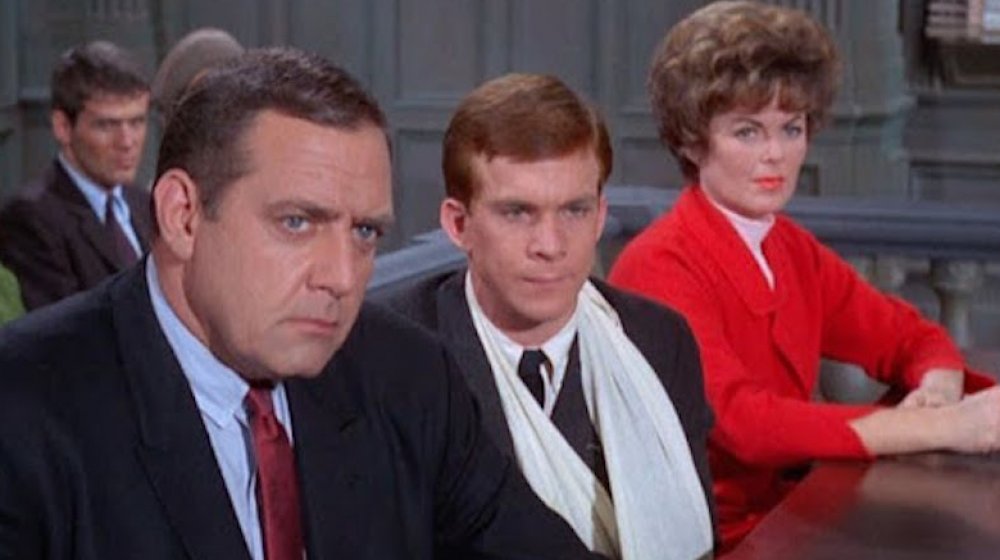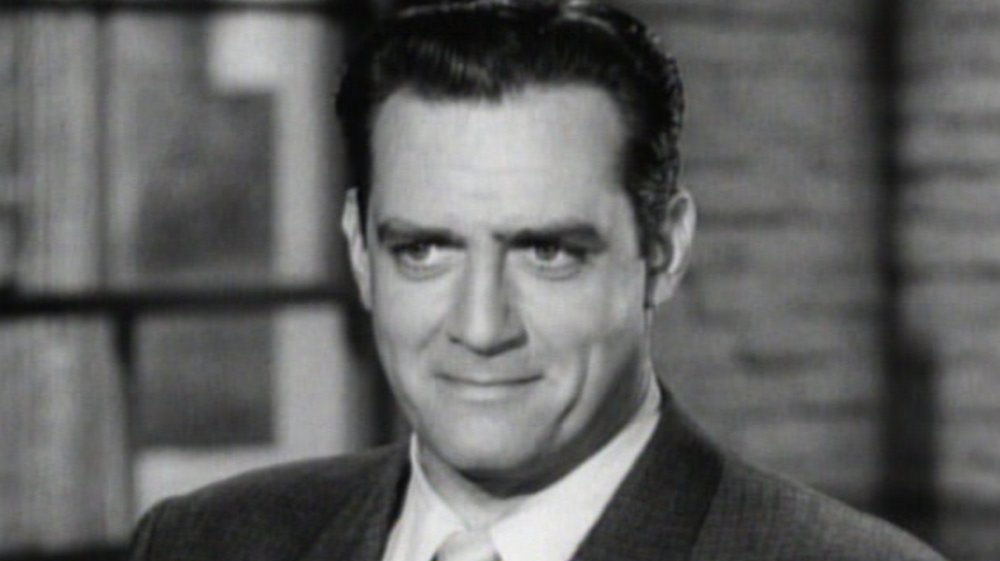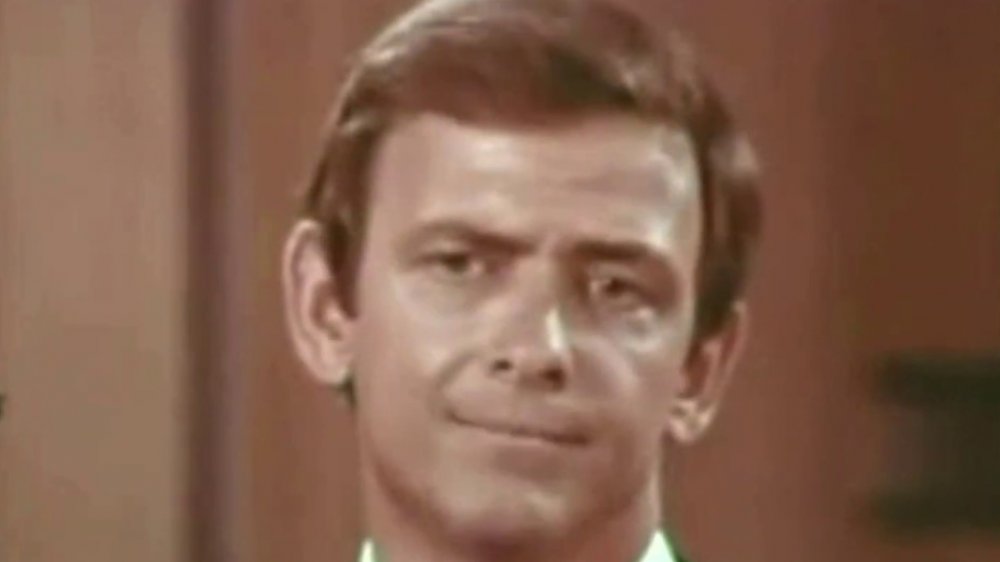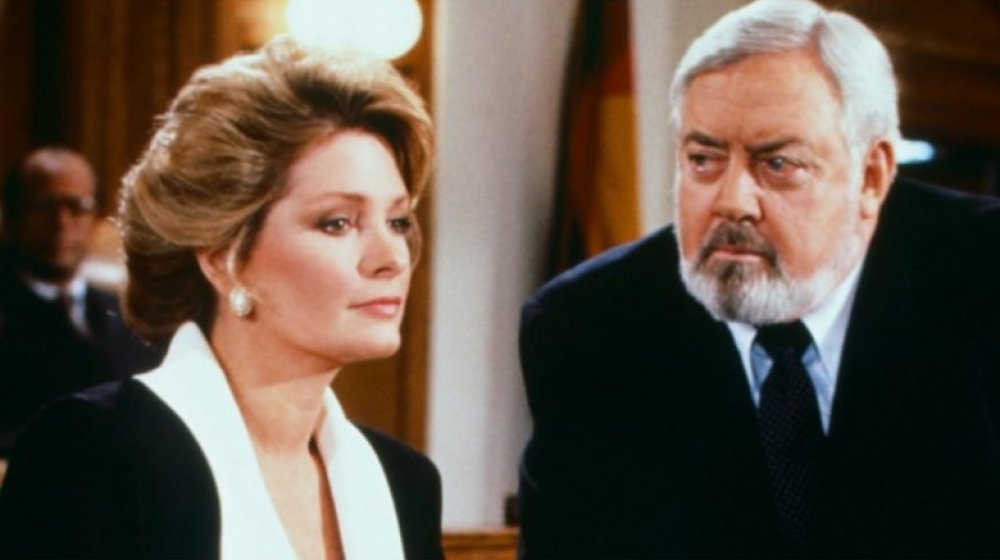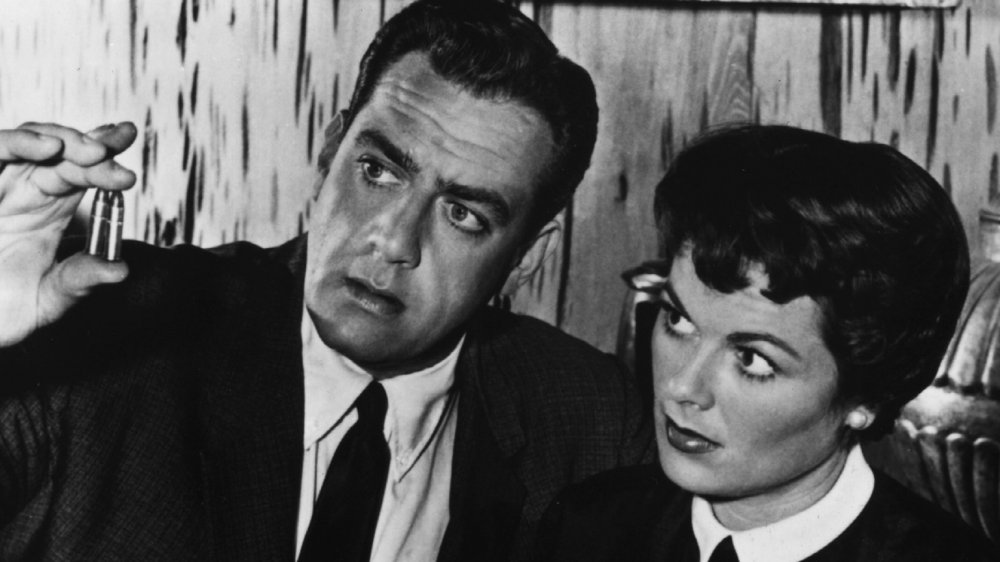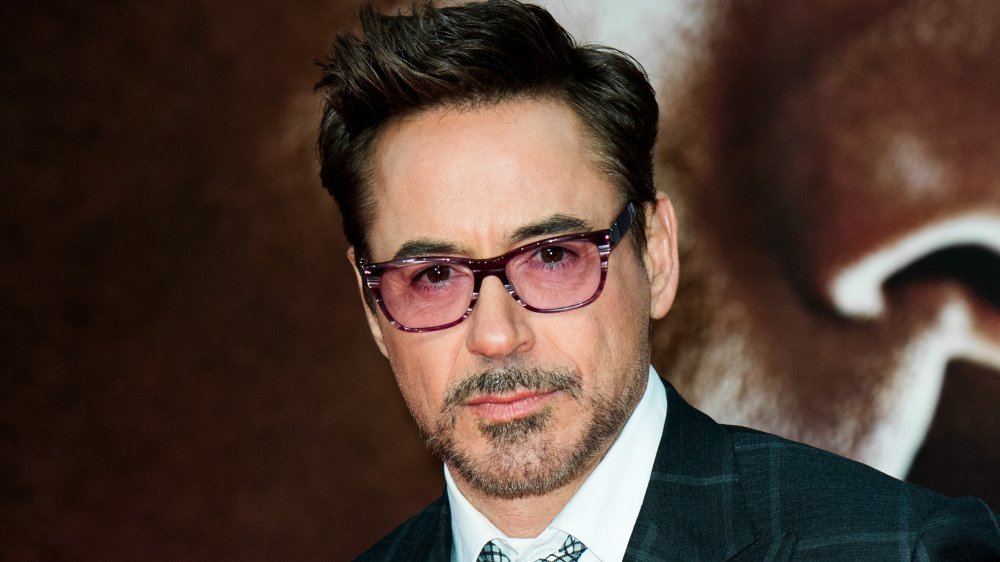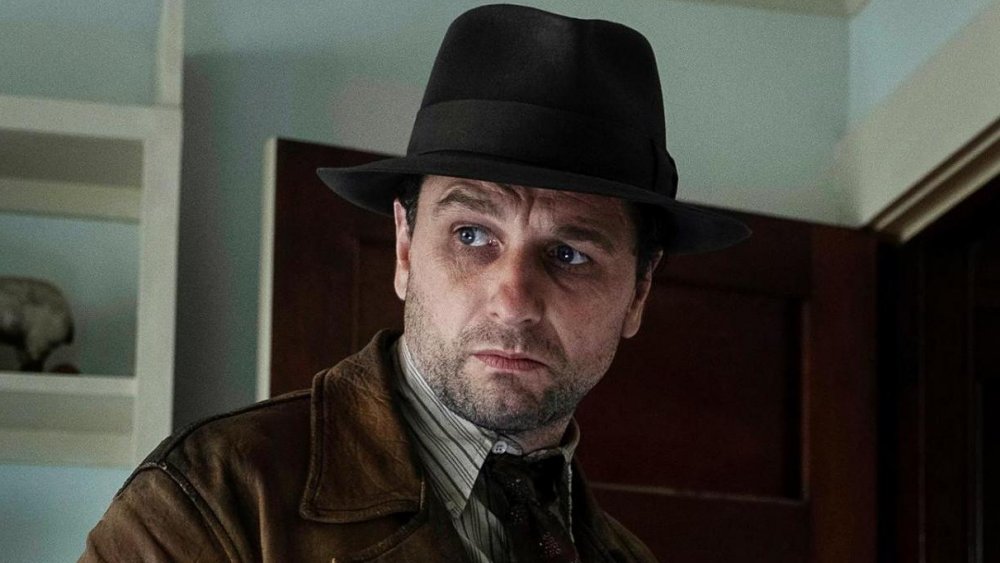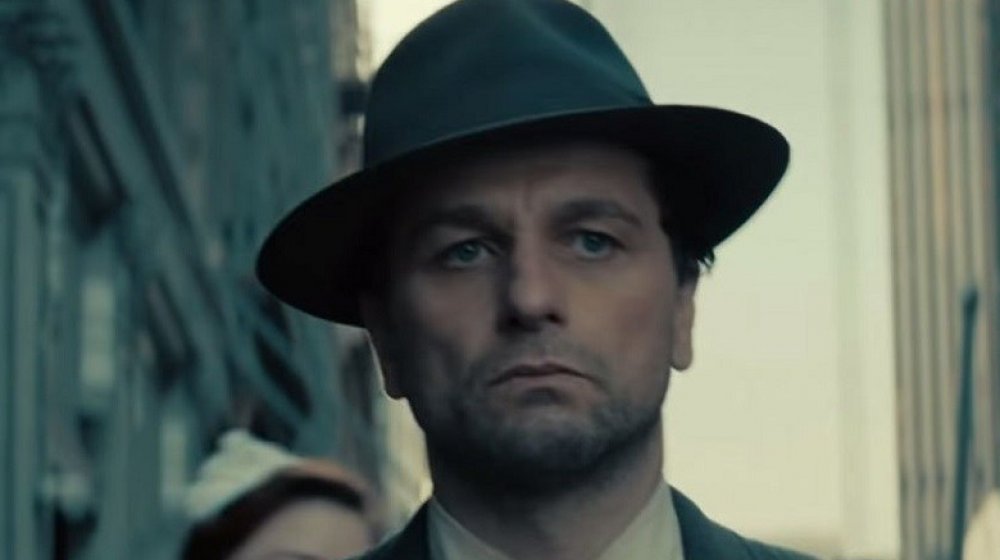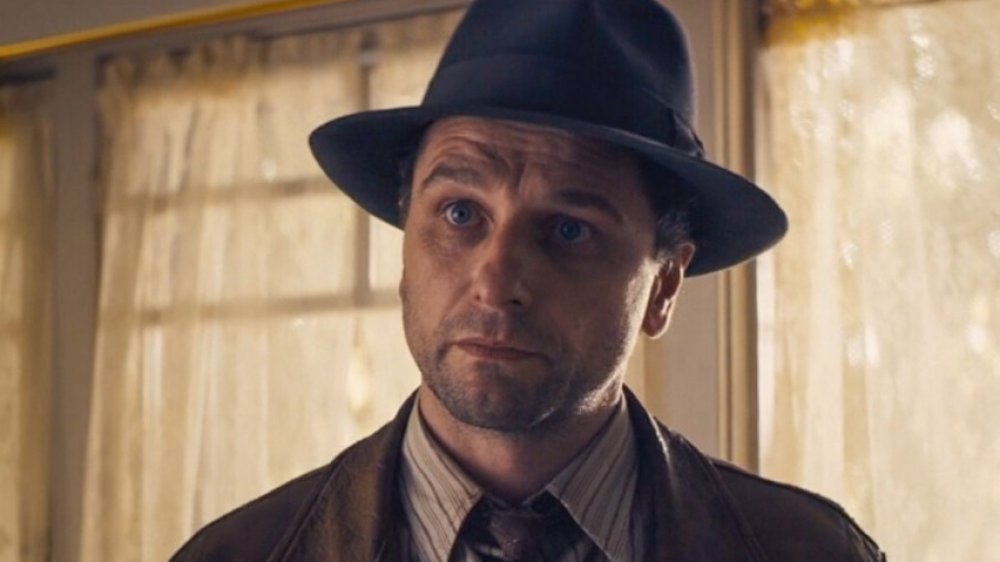The Untold Truth Of Perry Mason
Well before John Grisham's bestsellers, Law & Order, or Judge Judy, Americans devoured dramatic and spellbinding courtroom-based theatrics via Perry Mason. A pop culture sensation in the mid-20th century, the Perry Mason franchise most famously took the form of a 1957 to 1966 CBS series. For nine seasons, Raymond Burr portrayed Perry Mason (and won two Emmy Awards for his work), alongside Barbara Hale as his devoted secretary and confidante Della Street, William Hopper as Paul Drake, his private detective of choice, and William Talman as Hamilton Burger, the otherwise capable prosecutor that Mason defeated roughly 270 times. How did Mason always earn a client's freedom? The stern, driven, imposing Mason always came up with some little-known legal precedent, or he coerced a confession out of the real criminal on the witness stand — something which came to be known as a "Perry Mason moment."
The ace lawyer has been a part of the American cultural lexicon for the better part of a century, recently reemerging as a gritty HBO 1930s period piece that stayed faithful to Erle Stanley Garner's Mason novels. From the page to the screen, here's a look into the curious case of Perry Mason.
Perry Mason started out as a blockbuster book series
Despite dropping out of law school, Erle Stanley Gardner passed the California state bar exam and started working as an attorney in 1911. He specialized in representing underdogs, particularly immigrant laborers from Mexico and China, and spent hours in law libraries each night after arguing cases all day looking for obscure statutes that he could unleash in court at the perfect, dramatic, almost too-late moment. That would become a signature move of his literary creation, Perry Mason, when in the 1920s, Gardner adopted a side hustle of writing legal thrillers. At first, he planned to pen novels about different attorneys, but on the advice of a publisher, he opted to focus solely on Mason's adventures. The character debuted in the 1933 novel The Case of the Velvet Claws, a bestseller and the first of around 80 Perry Mason mysteries that Gardner would pen through 1969.
The public liked Gardner's entertaining (but reportedly exceedingly accurate) courtroom dramas, and he obliged. He referred to himself as "the fiction factory" and at one point employed six secretaries to type out the manuscripts he dictated into a tape recorder. After he passed away in 1970, the New York Times called Garner "the best-selling American author of the century," on account of how he'd moved 170 million copies of his Perry Mason books in the U.S. alone.
Before it was a TV show, Perry Mason was a media franchise
Perry Mason is most famous for its iterations as television show — the intense, courtroom series starring Raymond Burr from the 1950s and 1960s, and the moody, 1930s-set reimagining with Matthew Rhys that debuted on HBO in 2020. But long before Earle Stanley Gardner's popular books about Perry Mason were adapted for the small screen, they were successfully converted into other media formats. In 1934, just a year after the first Perry Mason novel delighted readers, the first Perry Mason movie, The Case of the Howling Dog, hit movie houses. Within three years' time, Warner Bros. would release a total of six Perry Mason movies based on Gardner's stories, four of them starring Warren William as the world's greatest attorney.
The Perry Mason radio program, a 15-minute serial that ran five afternoons a week from 1943 to 1955 on CBS Radio, more closely resembled Gardner's crime-and-action-filled novels, as opposed to the somber, courtroom-dominated 1957-1966 TV series. Over its dozen years on the air, audio-only Perry Mason starred a succession of actors in the titular role, such as Bartlett Robinson, Santos Ortega, Donald Briggs, and John Larkin. The show was popular enough that in 1956, CBS Radio tried to move it, format intact, to CBS television, but Gardner said no, leading the network to adapt it into the long-running daytime drama The Edge of Night.
The colorful case of the lost episode of Perry Mason
The original Perry Mason TV series ran from 1957 to 1966, and as a full season of a show back then ran around 30 episodes, a whopping 271 installments were produced. That provided syndicators with a huge volume of content to rerun on local stations hundreds of times over the ensuing 50-odd years. Perry Mason wasn't a serialized show — each episode generally focused on a single case, wrapped up within the self-contained story — so even dedicated fans probably wouldn't notice that the rerun package was one episode short for years. The Oliver Twist-inspired February 1966 installment "The Case of the Twice-Told Twist" is otherwise a run-of-the-mill Perry Mason episode, except for the fact that it was produced in full color — the only episode in the original series run not presented in black-and-white. As color took hold of TV by the mid-'60s, "Twice-Told Twist" was a test to see how Mason would look if it were renewed for a tenth season. "When we got to the end of nine, they asked me for one more year in color, and they shot one show in color and I said 'no,'" star Raymond Burr told the Washington Post. With no tenth season, there were no more color episodes of Perry Mason.
Perry Mason never lost a case... almost
Perry Mason of the 1957-1966 television series Perry Mason was so good at arguing his case in front of a judge and jury that, unlike a real-life attorney, his win-loss ratio leaned staggeringly in favor of the former: 268 wins and three losses. After all, he was the good guy and the title character, and in the relatively quaint world of early television, it would've been unthinkable for him to actually lose a case. In order to preserve those shocking twists that must have thrilled and baffled regular viewers, but to also ensure Perry Mason's winning record, show writers used some courtroom maneuvering to give the lawyer technical victories after the fact.
The 1963 episode "The Case of the Deadly Verdict" begins with a confused Mason receiving a guilty verdict (and a death sentence) for his client, accused of murder. But then he investigates and finds the real killer, his loss negated. In 1958's "The Case of the Terrified Typist," Mason's defendant is found guilty but is later revealed to be a trickster pretending to be the real bad guy. Mason's only actual loss came in 1963's "The Case of the Witless Witness," an episode that begins with the attorney losing an appeal on a case that wasn't the focus of that or any other Perry Mason installment.
The first attempt at a Perry Mason revival flopped hard
The 1950s and early '60s weren't too far in the past by the early 1970s, but a nostalgia for the period hit big anyway. Grease was a Broadway smash, American Graffiti a blockbuster movie, and on TV, shows starring old favorites and revivals of classics filled network schedules. In 1973 alone, CBS programmed The New Bill Cosby Show, The New Dick Van Dyke Show, and The New Perry Mason. It was a revival of the Perry Mason television series format, not the show itself (off the air only seven years at that point), as none of the original cast — Raymond Burr (Perry Mason), Barbara Hale (Della Street), William Hopper (Paul Drake), and William Talman (Hamilton Burger) — returned for the reboot. Instead, producers hired Monte Markham, a little-known actor best known for some guest spots on TV westerns and the one-season flop The Second Hundred Years, to take over for Burr in the iconic role of Perry Mason. CBS was apparently so confident in the project that according to Markham, they bypassed a pilot and ordered it straight to series, asking for 26 episodes. Only 15 installments aired before CBS canceled The New Perry Mason, which finished the 1973-74 season as #71 out of 80 shows.
Perry Mason was a popular TV movie fixture for a decade
Despite the instant and spectacular failure of The New Perry Mason on CBS, the intense and unbeatable attorney returned to television a mere 11 years later. This time, it was on NBC and in a different format: a succession of semi-regular, made-for-TV movies, and with the biggest (surviving) names from the original. Raymond Burr returned as Perry Mason, and so did Barbara Hale as secretary Della Street. The role of investigator Paul Drake, played by the deceased William Hopper, was reworked as Paul Drake, Jr., and Hale's real-life son, William Katt, took the part. Perry Mason showed up on TV three or four times a season for a two-hour time slot in these formulaic, Matlock-esque films, in which a crime was investigated and then tried in intense courtroom scenes. A total of 26 Perry Mason movies aired between 1985 and 1993. Perry Mason: The Case of the Killer Kiss was the last project Burr would star in, and it aired two months after his death. The made-for-TV Mason movies were so reliable for NBC that the network kept the franchise going for two years after Burr's passing. In four movies with the umbrella title A Perry Mason Mystery, the character Perry Mason is said to be out of town, and memorable lawyers Anthony Caruso (Paul Sorvino) and "Wild Bill" McKenzie (Hal Holbrook) argue some very Mason cases.
The people of Portland were positively perplexed when Perry went poof
Its status as a popular TV show in its original run that produced 271 episodes unsurprisingly made Perry Mason a hit in syndication. Reruns of the show have long been a reliable presence on American TV stations and cable networks, but it was arguably the most popular, and for the longest period of time, in Portland, Oregon. In 1966, local station KPTV started airing old Masons at night, then moved them to a weekdays at noon time slot. Not counting a 10-month period when it came on at 12:30 p.m. each day, Perry Mason was an immovable presence at 12 p.m. for more than 40 years. When a new station general manager took over in 2009, bosses gave him just one rule: Don't move Perry Mason. "It's untouchable," Patrick McCreery said. "We can add shows and take others off the air, but Perry is nothing to fool with." It would've been a bad business move to mess with it — about 10 percent of people watching TV in Portland at noon watched those ancient episodes of Perry Mason. And when the station didn't air Mason for any reason, such as a 30 minute pre-emption to cover a presidential news event, the switchboard unfailingly lit up with numerous irate phone calls. By 2014, however, ratings had finally started to slip. After 46 years on KPTV, and two years on sister station KPDX in an 8 a.m. slot, it was case closed for Perry in Portland.
HBO's Perry Mason almost involved a different cast and crew
The Perry Mason character more or less died when Raymond Burr did in 1993. But in 2011, plans began in earnest to revive the crackerjack attorney and his cast of characters for a feature film starring one of the biggest movie stars in the world. Robert Downey Jr. and his wife, producer Susan Downey, set it up at Warner Bros., with the Iron Man actor also serving as the lead actor and co-writer — the script was to be based on a brand new Perry Mason story, set in the dark and seedy Los Angeles of Erle Stanley Gardner's novels, that he wrote with production associate David Gambino. The movie never got off the ground, but in 2016, the project shifted to HBO, where execs were eager to make a new Perry Mason show and hired True Detective creator Nic Pizzolatto to write the episodes. A year later, however, Pizzolatto had dropped out (in favor of a third season of True Detective, with Mahershala Ali), and HBO brought in Weeds and Friday Night Lights writers Rolin Jones and Ron Fitzgerald. The series was further delayed when Downey decided to serve only as an executive producer on Perry Mason and not act in it, opening the door for the Emmy-winning star of The Americans, Matthew Rhys. Finally, in March 2019, HBO officially ordered a Mason miniseries.
Matthew Rhys was initially not at all interested in playing Perry Mason
"I got this message saying, 'They wanna talk to you about a remake of Perry Mason.' And I was like, 'Why would you wanna remake Perry Mason? You can't remake Perry Mason,'" Matthew Rhys recalled to Collider. When Rhys received the full context of the offer from his agent, that it was an HBO reimagining of Perry Mason, his interest piqued. "At the pitch meeting with the producers and writers, I realized very quickly that it wasn't a remake. It's a firm re-imagining and a redefining of Perry Mason, in a very interesting way."
Then when production got moving along, Rhys realized his initial aversion to remaking Perry Mason was even more misguided, because he had few concrete, preconceived notions of the show and its main character. "You have this image of who Perry Mason is. I, for one, had this image of who Perry Mason was, and then you have these vague memories of people confessing on the stand, but I had no real specifics of Perry Mason." Nevertheless, Rhys was interested because it's "a very dark Perry Mason to which I was instantly attracted," as he told NPR.
The central case of the new Perry Mason is based on a true story
The Perry Mason of HBO's 2020 reimagining of Perry Mason is nothing like the Perry Mason of CBS's 1957 to 1966 Perry Mason. Not yet an established, nearly impossible to beat criminal defense attorney, the Mason portrayed by Matthew Rhys is more like the one from Erle Stanley Gardner's 1930s Mason novels. This version of the character is a broke, bitter private detective, complicated and burdened, still suffering from PTSD years after fighting in World War I and haunted by a divorce, and self-medicating with alcohol. The action kicks off when defense attorney E.B. Jonathan (John Lithgow) hires Mason to investigate a case, and it's one that bears more than a passing resemblance to a real-life 1930s event, one so significant and sensationalized it was deemed the "Trial of the Century."
In 1927, aviator Charles Lindbergh became an American hero and prominent celebrity after a solo, nonstop airplane voyage across the Atlantic Ocean. In 1932, his infant son, Charles Jr., was kidnapped from his bedroom for ransom and later found deceased. German-born carpenter Bruno Hauptmann was convicted and executed for the crime, despite flimsy evidence. Similarly, the 2020 Perry Mason also takes place in the early 1930s and involves Perry (Matthew Rhys) investigating the mysterious and suspect ransom and murder of baby Charlie Dodson.
The Perry Mason reboot was supposed to be a limited series
Despite putting all of its significant resources into producing and promoting the new-but-old Perry Mason origin series, HBO apparently didn't have exceptionally high expectations for how the series would perform. According to Entertainment Weekly, it didn't even designate the show as a drama series, preferring to label and sell it as a miniseries. That way, had it not attracted viewers and the network decided to canceled it after its initial, finite order of eight episodes, it wouldn't lose face. (And it could compete in miniseries categories at the 2021 Emmy Awards, too.) All of that trepidation was for naught. Adding up all the different ways that subscribers can consume HBO, the first episode in June 2020 attracted 1.7 million viewers — the cable service's biggest debut in two years, outdrawing recent hits like The Outsider and Watchmen.
Within a month, Perry Mason had an audience of eight million, leading HBO to reclassify the series as a drama — and then renew it for season two.
